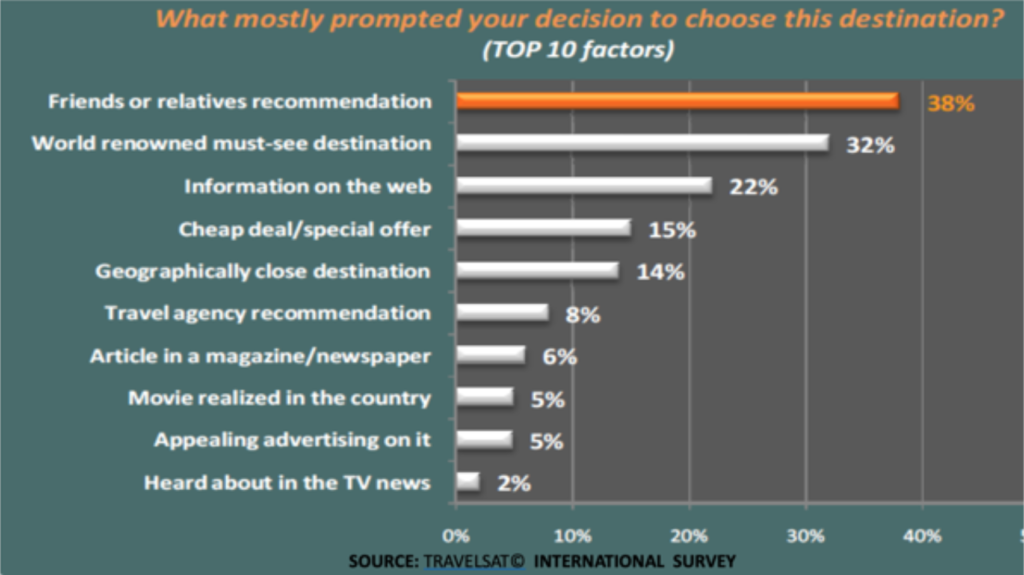By DMS
At the risk of stating the bleeding obvious, COVID-19 has smashed the tourism industry. Lock- downs, border closures and a host of other travel restrictions have, for many destinations, stripped thousands if not millions of dollars from their visitor economies.
While all destinations vary, international and interstate travel have been the hardest hit markets. Tourism Research Australia data shows that total domestic and international visitor expenditure to the Blue Mountains dropped 33% YoY as at December 2020. Similarly, visitor expenditure in the North and South Coast of NSW dropped 28% and 26% respectively. Pretty grim figures.
While we’ve seen a rebound in more recent times, this will be impacted by the increasing competition for a share of the domestic market.
COVID-19 has also had many lasting impacts on consumer behaviour, including:
- An increased motivation to connect with friends and family.
- Nature-based tourism is on the up and up. Evolving from a once-niche to a must-do market.
- Accommodation preferences are changing. Short-term rental, boutique and bespoke accommodation is more and more appealing.
- There is renewed interest in the great Aussie Road trip and the rise of small group travel.
- And of course, technology has changed the landscape for good. All audiences are now more familiar with online and digital channels.
The VFR Opportunity
It’s this first insight – an increased motivation to connect with friends and family – that we are taking a closer look at today. Nearly half (46%) of all Australians list visiting friends and relatives (VFR) as their main driver for travel.
No prizes for guessing that over the next few months people won’t need much motivation to travel. After COVID-19 people will start travelling the world again. As things settle into something resembling the new normal, competition for a slice of people’s leisure time will be fierce. Particularly when it comes to capturing a share of the domestic market.
More people are likely to be heading off overseas. Tourism Australia’s Sentiment Analysis indicates that people’s intention to travel overseas for their next major holiday has significantly increased at the expense of domestic. Around 50% of Australians are now saving for an overseas holiday.
To make matters worse, it’s likely that international visitor levels will still take some time to return to pre- pandemic levels.
Recovery & Resilience
That’s where we think the VFR market has an important role to play. Not just by contributing to a destination’s long-term recovery but as a strong foundation for future resilience. Tourism Australia’s Sentiment Analysis (July 2021) shows that escaping everyday life and reconnecting with family and friends are the biggest drivers for a domestic holiday.
A substantial segment of Australian tourism already comes from people visiting their friends and relatives. And that’s without, in the main, any structured program of activity designed to grow the market.
Tourism Research Australia (TRA) data indicate that it’s not uncommon that between 25% and 40% of a destinations’ domestic visitors are people visiting their friends and relatives.
Not only is VFR large in terms of numbers; it’s large in terms of dollars. For the year ending March 2018, Australians took 33 million domestic overnight trips to visit friends and relatives. TRA valued those trips at $14.5 billion. This is almost on a par with the business conferencing market ($16 billion).
In fact, if you included VFR host expenditure, the VFR market would be worth significantly more than business conferencing. We don’t have the figures for Australia, but we do for NSW. In 2016, Destination NSW research found that for the year ending March 2016 domestic and international VFR visitors to NSW spent over $4.5 billion. When VFR host expenditure was added to this figure it grew to $7.7billion. An impressive 69% increase!
The VFR market offers a useful range of additional benefits for destinations looking to grow their visitor economy in a sustainable way.
- They are more willing to travel outside of peak season, making them a perfect audience for any destination looking to ‘top-up’ their visitor numbers in the low or shoulder seasons. Balancing out business opportunities, year-round.
- They tend to stay longer than other visitors: 60% stay for seven days or longer (Source: My Travel Research).
- They are more likely to be repeat visitors; making, on average, between two to three VFR-related visits every year (Source: Elisa Backer and Brian King).
- For a variety of reasons, the VFR market are frequent users of commercial accommodation. Destination NSW puts the figure at somewhere between 16% – 22% for domestic VFR travel. Interestingly this increases to 48% for international visitors. Destination Melbourne landed on 26%. While My Travel Research puts the figure as high as 48%.
Interestingly, a lot of anecdotal feedback indicates that friends and relatives are more trusted (to do the right thing) by residents than other visitor segments. The importance of ‘trust’ has become even greater with COVID-19. This is an area we plan to explore further, using more formal and structured research in 2022.
Arguably most important, activating the VFR market leverages the most powerful marketing tool available: Word of Mouth (WOM). A recent Nielsen Global Trust in Advertising research report showed that 83% of consumers trust recommendations from friends and family more than any other form of marketing”. A sentiment confirmed in a wide range of other research studies. From WOMMA (Word of Mouth Marketing Association) through to Google and TRAVELSAT.

Our most recent research into the VFR market – conducted by Destination Research in April 2020 – is the first in a series of planned reviews that was unfortunately interrupted by COVID-19.
It involved a comprehensive review of academic and industry research and confirmed that the motives and behaviours of VFR travellers are unique. Making them a distinct segment for destinations to target. Their desire to regularly reconnect with families and reaffirm their roots in their hometowns, creates a strong motive to travel. For both day trips and extended holidays.
The research also provided strong evidence that the VFR market is less affected by seasonality and external threats than other segments, returning regularly to their favourite restaurants, pubs and shops along with their host.
The host is a unique aspect of the VFR market and one that is incredibly valuable to marketers as it can be leveraged for both visitor marketing and visitor servicing. In this way, destinations can actively encourage higher rates of visitation from the VFR segment through interactions with both the host as well as the hosts friends and family.
In short, the Visiting Friends & Relatives market presents a fantastic opportunity for Australian destinations – big and small, regional or metropolitan – to build a strong foundation for long-term recovery and future resilience.
DMS Innovate, part of the DMS Group, has developed a proprietary solution, ComeVisit that mobilises a community’s residents to increase visitation to their region by inviting their friends & family to Come Visit! It’s easy, it’s fun and it’s based on a simple truth: recommendations from friends and family are trusted more than any other form of marketing.
If you would like to receive a copy of the stage one VFR Report or find out more about ComeVisit, send us an email at sayhello@destinationmarketingstore.com.au



Pingback: An Art Holiday with Your Best Friends Creates life-long Memories - Tin Dragon Cottages